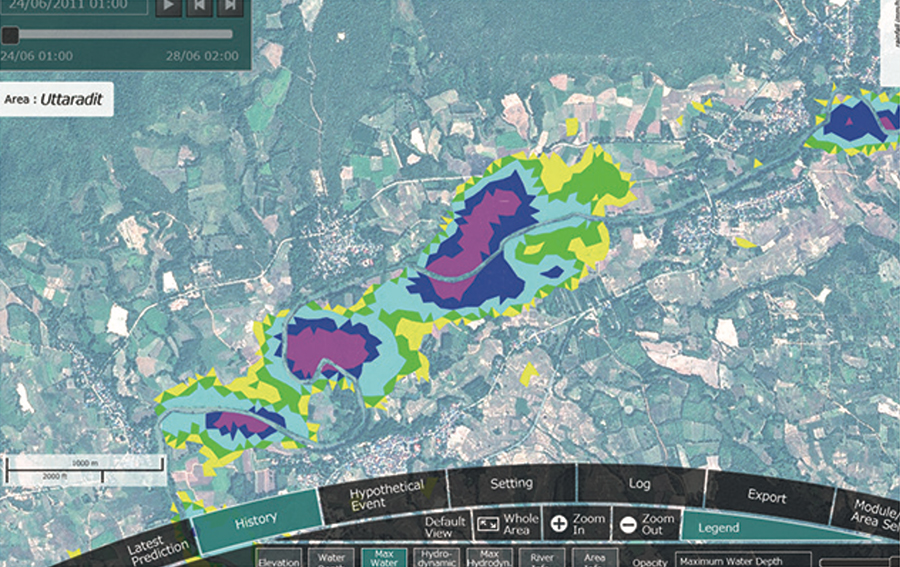3
Our Efforts toward Further Reduction
of Emissions through Innovation

Innovative Technologies on Both Energy Supply and Demand Sides
Companies in Japanese EE industries are striving to advance existing technologies and to develop innovative technologies on both energy supply and demand sides, and are working on spreading these technologies.(Fig. 13)
Fig. 13 Examples of innovative technologies related to Japanese EE industries
Source:Created by the Liaison Group of Japanese Electrical and Electronics Industries for Global Warming Prevention based on updated abstract of an explanatory material for the "Cool Earth-Energy Innovative Technology Plan (2008)" by the Ministry of Economy, Trade and Industry
Development and Promotion of Innovative Technologies
High-efficiency thermal power generation
In the field of thermal power generation (coal, oil, and natural gas), which supplies almost 70% of the electricity consumed in the world, companies in Japanese EE industries are working on the improvement of power generation efficiency by using new technologies such as higher steam temperature and pressure, pulverized-coal combustion, and combined operation of gas turbines and steam turbines.
As a result, efficiency of domestic thermal power generation is currently top class in the world. Furthermore, these companies are working on technological develop- ment to improve efficiency by integrating solid oxide fuel cells with combined gas turbine systems (triple combined cycle system).(Fig. 14)
Fig. 14 Roadmap of high-efficiency technologies for thermal power generation
Source:Created by Liaison Group of Japanese Electrical and Electronics Industries for Global Warming Prevention based on materials from the Ministry of Economy, Trade and Industry
CCS
CCS※8 is a technology to capture and store CO2 emitted from factories and power plants. It can be introduced to existing thermal power plants, and it is expected that this technology will contribute to the prevention of global warming.(Fig. 16)
In Fukuoka Prefecture, a pilot plant with a capacity of capturing 10 tons of CO2 per day is under construction. It will verify its performance, operability and main-tainability along with the development and refinement of thermal power plants.
- ※8
- CCS:Carbon dioxide Capture and Storage
Power electronics
Power electronics products are key devices that play a crucial role in power conversion and control. They contribute to the realization of a Carbon Neutrality by advancing energy-savings for home electric appliances, electric vehicles and railways, as well as for power supplies. (Fig. 15)
Fig. 15 Roadmap of wide-bandgap semiconductor power electronics
Source:Advanced Power Electronics Research Center, National Institute of Advanced Industrial Science and Technology
Fig. 16 CO2 capture technology expected to be developed by around 2030
Source:Created by Liaison Group of Japanese Electrical and Electronics Industries for Global Warming Prevention based on materials from the Ministry of Economy, Trade and Industry
Smart Grid and Smart Community
Companies in Japanese EE industries are developing “Smart Grid” which is a next-generation power transmission network which provides stable supply of pow- er under optimal control of both supply and demand sides by combining renew-able energy such as wind and photovoltaic power generation with conventional power generation methods and large-capacity batteries. They are also developing “Smart Community”, which realizes energy savings based on the Smart Grid. These companies have been proactively participating in demonstration projects※9 for Smart Community development in Japan and overseas. (Fig. 17)
- ※9
- Implemented in various countries including Japan, USA, Spain, UK, France, Italy, Bulgaria, China, Vietnam, Thailand, Malaysia and India
IT/IoT solutions
Much attention is being given to IT/IoT solutions that take advantage of technolo-gies such as IoT, AI, big data and robots.
IT/IoT solutions extract knowledge for solving problems by analyzing real-world data collected by sensors using AI and big data, which is utilized for optimal control and automatization by robots. This will make it possible to realize not only labor savings and efficiency improvement of factories and distribution but also new services such as sharing, contributing to the improvement of energy and resource efficiency throughout society as a whole. Companies in Japanese EE industries are working on the development and promotion of innovative IT/IoT solutions. (Fig. 18)
Fig. 18 Image of the expansion of IT/IoT solutions
Source:Created by Liaison Group of Japanese Electrical and Electronics Industries for Global Warming Prevention based on materials from the Japan Electronics and Information Technology Industries Association
Adaptation
Companies in Japanese EE industries are proactively working not only on mitigation to take measures for the reduction of emissions and absorption of greenhouse gases, but also on adaptation to take measures to minimize economic loss and human damages of natural disasters caused by the effects of climate change, by actively utilizing technologies such as IT/IoT solutions.
Example: Flood simulation
Companies in Japanese EE indus-tries are supporting the provision of early warnings to residents and the creation of hazard maps by predict-ing floods based on geological data, water levels, observed/predicted rainfall data, sensor data, and so on.










